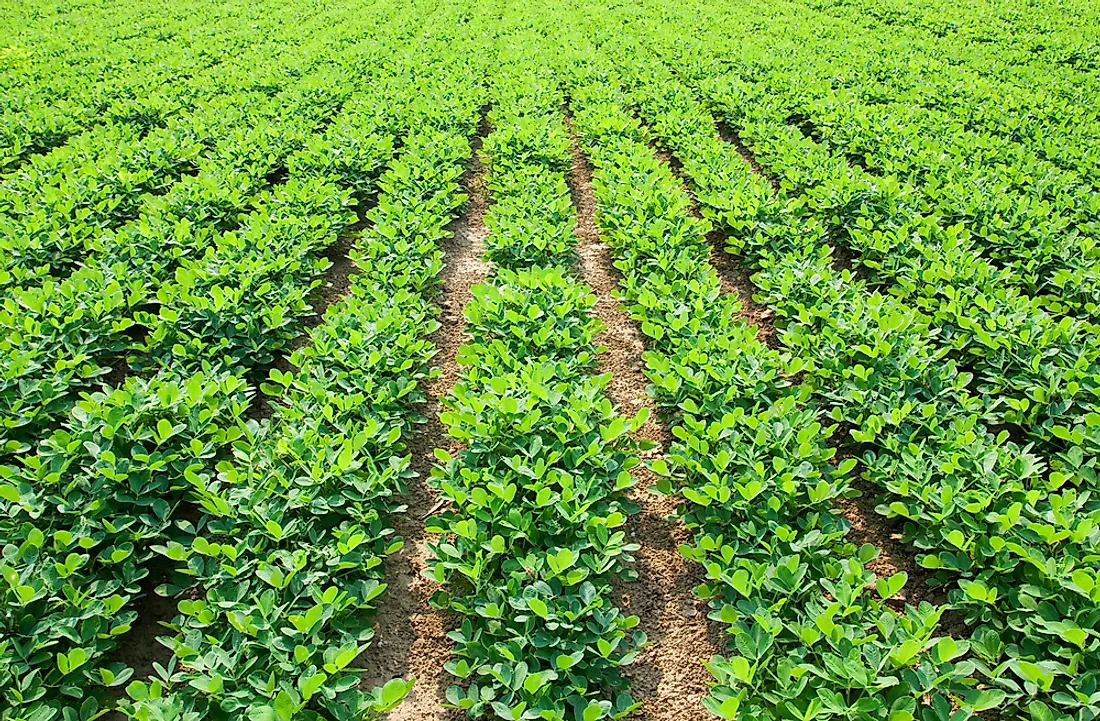How Do Peanuts Grow?

Peanuts, Arachis hypogeal, are nutritious snacks and an important source of antioxidants and vitamins. Eating a handful of peanuts every day have been shownt o possibly reduce the risk of heart diseases. Peanuts go by different names including goobers, groundnuts, or earth nuts. Peanuts are legumes and not nuts as some people may think. Although there are several varieties of peanuts, there are four major market types. These varieties include Virginia, Spanish, Runner, and Valencia. Each of the variety has a distinct size, taste, and nutritional composition. Peanuts can be eaten raw, roasted, salted, or as a peanut butter.
Growing Peanuts
Contrary to popular thinking, peanuts do not grow on trees. Although flowering takes place on the surface, the nuts grow beneath the soil. It takes approximately 4-5 months from preparing the land to harvesting of peanuts, depending on the variety and the prevailing weather conditions. Peanuts require a relatively warm climate and approximately 600 mm of well-distributed water to produce a high yield. The soil needs to be well-drained and friable soil with no large stones. The soil PH should range from 5 to 8 as long as the PH is not associated with the nutrient disorder. Heavy chemicals in the soil may contaminate peanuts.
Seeds are planted at the beginning of spring. The seeds planted are those grown and planted kernels from the previous planting season. The seeds are planted approximately 2 inches deep and a spacing of about 5 centimeters in rows. About ten days after planting, the peanut seedlings rise from the soil. The green leafy plant is often 45 centimeters tall. The peanut plant flowers above the ground but the fruit develop beneath the ground. The flowers emerge 30-40 days after planting depending on the variety. After self-pollination, the base of the ovary elongates and bends downwards, penetrating the soil. The tip of the elongated ovary forms a pod which contains kernels.
Management Practices
Different stages of crop growth require specific management practices for maximum production. During planting, a farmer must ensure that the seedbed is carefully prepared and that seeds are plated at the right time, rate, and depth. Calcium is applied to the crop before flowering for the development of pods while phosphorous is applied for root development. Weeding is necessary to get rid of pests and weeds that may affect yield. The crops can only be irrigated if there is insufficient rainfall.
Harvesting
Peanuts are harvested in the fall. The harvesting process is more complicated than most of the crops because the peanut kernels are beneath the ground and mature unevenly. Therefore, it is important for the farmer to correctly time crop to avoid yield and quality loss. The peanuts are often pulled from the ground using a special machine. They can also be pulled using hands if on small scale. They are then turned over to dry for several days. The peanuts are then separated from the vine using the combine machine. The peanuts are passed through the drying wagon. Once the peanuts are dried, they are packed in special sucks for storage or transportation to the market. At the market, they are inspected and graded for sale.











